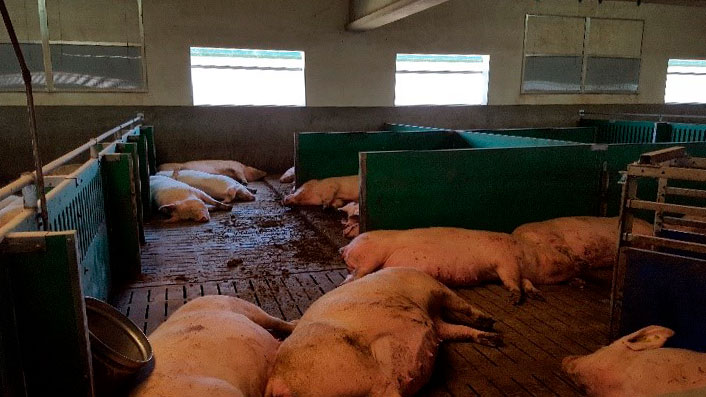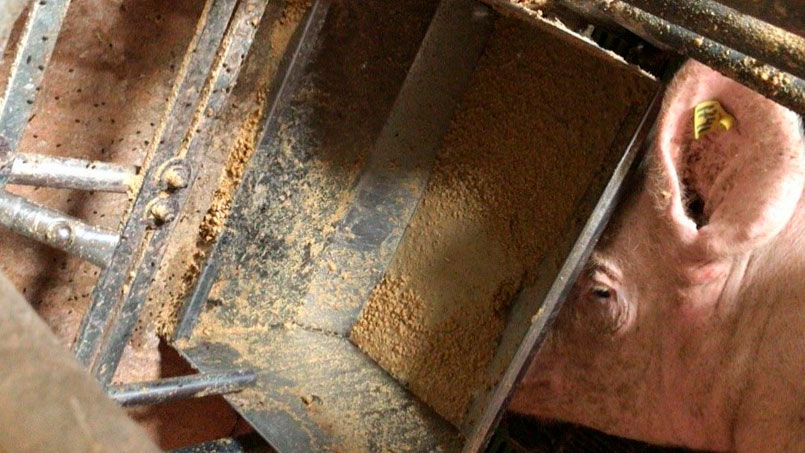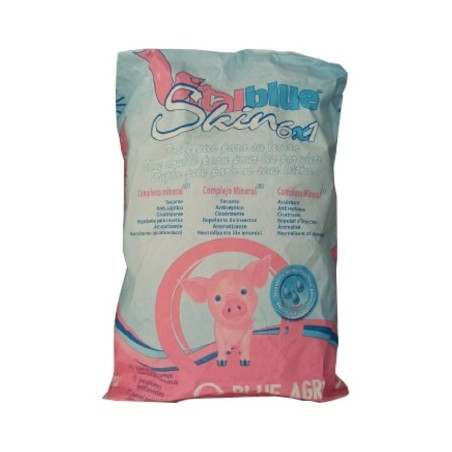In this article we discuss with the four experts how to feed the sow around farrowing and during lactation.
Influence of pre-farrowing feeding

Guedes believes that there is no direct relationship between peri-farrowing feeding and the occurrence of diarrhea, however, what he does consider important in relation to diarrhea is the quality and quantity of colostrum. Quantity has to do with peri-farrowing feeding, but quality has to do with feeding during the last third of gestation, where the development of the mammary glands takes place.
For Cantín, sow feeding is the key to better controlling neonatal diarrhea. He points out an aspect frequently observed on farms to reinforce this thought: there are farms that work with two different genetic lines, one hyperprolific and the other not. Therefore, they share the same feeding, infection pressure, environment, etc. In these situations, the incidence of diarrhea is frequently observed to be much higher in the litters coming from hyperprolific sows than in the others. The ratio can be as high as 8 to 1. He continues: this happens because this type of sow is not being fed well, especially in the final phase of gestation. He develops the idea: the hyperprolific genetic lines present high nutritional requirements at the end of gestation since they must feed 18-19 fetuses on average, plus these animals grow until their 4th or 5th parity. Because of this, many sows start to mobilize fat before lactation, even two weeks before farrowing and some of them, especially the gilts, enter into a state of ketosis. This has a great influence on the development of diarrhea (Photo 1).

Photo 1. It is important to respond to the elevated nutritional needs that hyperprolific sows have at the end of gestation to reduce problems in neonatal piglets post-farrowing.
So, he concludes, the "peri-farrowing" feed should, in fact, be a feed that starts at 80 days of gestation, because that is when all these additional requirements start. It has long been debated about whether or not to increase feed at the end of gestation, when we should be discussing "quality" rather than "quantity" curves.
Vraeghe agrees with Cantin on the importance of using a peri-farrowing feed. He explains that more and more, a specific feed is being used from the time the sow enters the farrowing room until 2-3 days post-farrowing, with very good results. However, both Guedes and Ackerman commented that the use of these peri-farrowing feeds is not common in their areas. In their cases, the sows eat lactation feed starting the moment they enter the farrowing room.
Feeding during farrowing and during lactation
Ackerman places an emphasis on the body condition with which the sow enters the farrowing room. He believes that the sow must enter farrowing with a body condition of 3.
Before farrowing, sows are given 2-2.5 kg in different meals during the day. He prefers to keep them somewhat hungry on these days prior to farrowing in order to build up an appetite after farrowing. Once they have farrowed, he prefers to rapidly increase the feed. He says that although most farms have automated feeding, he prefers manual feeding at this stage in order to be able to feed them several times a day, observing whether they have eaten the previous meal, and allowing the amount to be increased. He adds that no “efforts” should be spared, due to the cost of lactation feed. Good lactation is essential in the sow in order to prevent problems in the piglets, and this requires the feed to be highly palatable with adequate levels of lysine. In his case, he always adds a mycotoxin sequestrant binder to the feed.
Guedes says that in Brazil they normally tend to restrict feed before farrowing and no feed is given on the day of farrowing, but when farrowing is over, the sow is offered as much feed she wants to eat, since she has to recover and produce as much milk as possible.
Vraeghe prioritizes preventing the sow from going off feed before or after farrowing (Photo 2). He considers it necessary to start administering 2.5-3 kg post-farrowing and to gradually increase it. The goal is to achieve a high feed intake but avoid "blocking" the sow. This would have a negative impact on the health of the piglets and on the lactation.

Photo 2. Feeding must be controlled peri-farrowing and in the days following farrowing, preventing the sow from going off feed.
Cantín points out that hyperprolific sows have very long farrowing periods, which can last 6-7 hours. The risk of them becoming exhausted is high, so attention must be paid to sugar levels the day before farrowing. He also advocates for feeding during farrowing if the sow requires.
After farrowing, he prefers rapidly increasing the feed. One must keep in mind that requirements are very high and sows make it to farrowing with few body reserves. Therefore, it is recommended that the sow reaches 6 kg of feed by 3-4 days post-farrowing. However, in order to prevent the sow from going off feed, a plateau can be made between day 3 and 5 post-farrowing until day 8-10 post-farrowing, and from there another increase can be made. The challenge is to give the sow as much as she can eat without her going off feed.

Water supply
All the authors agree on the importance of water supply. Vraeghe specifies: it is necessary to achieve a consumption of minimum 18 liters around farrowing, and after farrowing, 1 liter per day extra, to reach a maximum consumption of minimum 30-35 liters. To achieve this, it is essential that the water supply system is of good quality, that there are no major changes between the water supply system in gestation and the one in lactation, and that the nipples have a correct flow and position. He recommends adding extra water 5-6 days around farrowing to stimulate water consumption. Any deficiency in water intake will result in less milk production and more diarrhea in the piglets.
In conclusion, feeding in the final phase of gestation and in the first days after farrowing should always be included in the aspects to review and consider when dealing with neonatal diarrhea problems.





